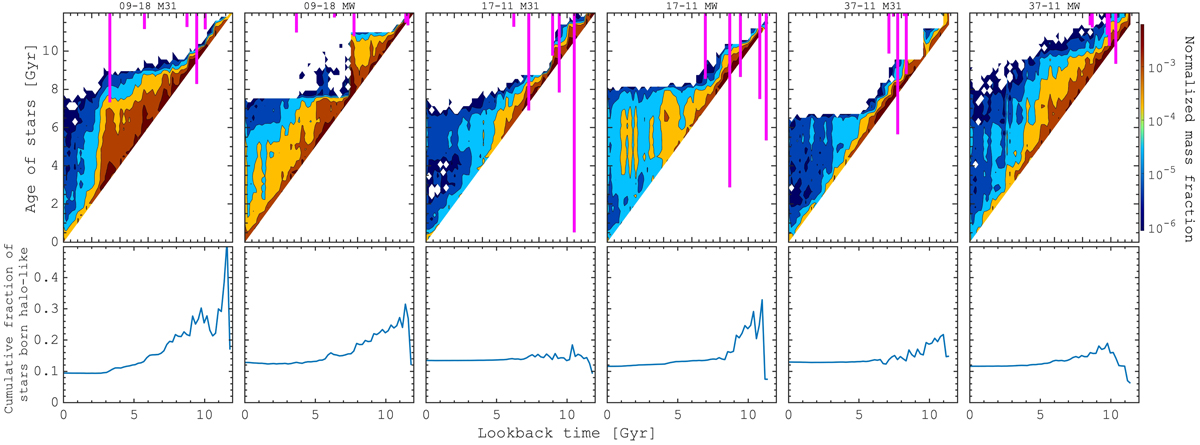Fig. 10.

Download original image
Formation of the kinematically defined stellar halo. The top panels show the distribution of the ages of stars that start to contribute to the kinematically defined stellar halo (see Fig. 9) at a given time. Magenta vertical lines highlight five of the most significant mergers (M1–M5), in terms of the stellar mass ratio. Bottom panels show the cumulative fraction of stars that formed with halo-like kinematics. The figure suggests that at a given time, the newly formed stars contribute the most to the kinematically defined stellar halo region of the Toomre diagram. The reason for this type behaviour is that the youngest stars have colder kinematics compared to the pre-existing stars, thus, these recently that formed stars are the most sensitive to the external perturbations of the disc caused by the mergers. Since the fraction of stars formed kinematically hot does not exceed 10 − 12% of the in situ stars, the heating of the pre-existing populations is the dominant mechanism of the in situ halo formation in the HESTIA galaxies.
Current usage metrics show cumulative count of Article Views (full-text article views including HTML views, PDF and ePub downloads, according to the available data) and Abstracts Views on Vision4Press platform.
Data correspond to usage on the plateform after 2015. The current usage metrics is available 48-96 hours after online publication and is updated daily on week days.
Initial download of the metrics may take a while.


